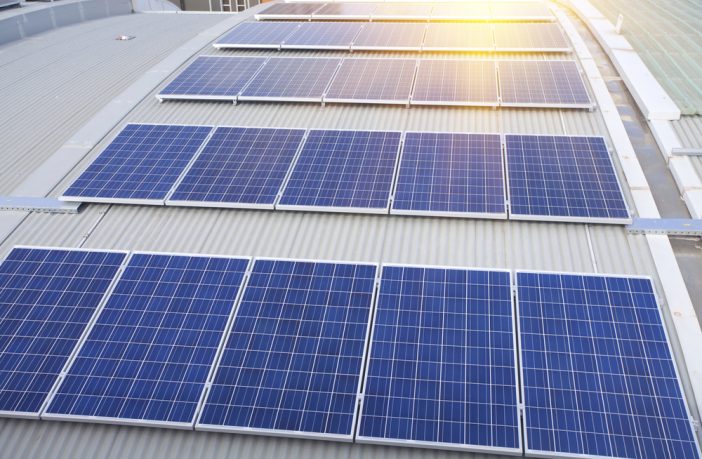“Studies show that 97% of photovoltaic solar power is generated between 9am and 6pm. This is also the time when municipalities could recoup their losses and represents up to 60% of profit loss,” states the winner of best paper at the AMEU convention, Poonam Lutchman.
The award-winning paper on ‘Incorporating embedded generation into municipal networks’ unpacks ways to reduce the financial impact caused by privately owned microgrids and generate sustainable revenue in the process.
Read more: Preparing municipalities for customers of the future
Lutchman, the digital solution architect at Schneider Electric, explains: “Embedded generation describes the small-scale production of power connected within the electricity distribution network, located close to the place of consumption. It entails the production of electricity from generation facilities connected to the national grid, with or without wheeling arrangements.”
She adds: “Currently there is a move to incorporate this transformation into South Africa’s legislation. The Integrated Resource Plan (IRP), which is the energy blueprint for South Africa, makes provision for embedded generation, currently at 200MW. On 2 May 2019, the Department of Energy sent a letter to the National Energy Regulator of South Africa (NERSA) granting a deviation from the existing IRP for licensing operation of generation facilities ranging from 1MW to 10MW, with a limit of 500MW annually applicable for own use generation.”
Read more: Measuring embedded generation opportunities for municipalities
“These changes to peak pricing are more significant for municipalities that are more exposed to the residential sector than Eskom. Although residential use of electricity in South Africa represents 18% of all electricity demand, at peak times residential demand represents over 35% of total demand. At present, large municipalities are already supplying electricity to residents during winter peak times at a loss. The peak period, five hours of the day in winter, accounts for half of the total cost of all electricity supplied on the day in question. A stylised representation for a municipality might be as follows:

“The problem becomes more acute when ‘losses’ during peak times are not fully recovered from the sale of electricity during off-peak and standard times. Higher flat-rate residential tariffs mean that South Africans have to save electricity where they can. However, they save during standard and off-peak times, which is where the surpluses are generated.
“Moreover, residents and businesses paying the highest block tariffs are looking to move to solar water geysers and embedded generation (largely installing PV panels). Yet, during the early mornings and evenings (peaks), these customers are still drawing electricity from the grid, which makes them increasingly less profitable. Municipalities are not able to fully recover their position due to the flat tariff imposed on these customers.
“Currently residential and commercial consumers with PV or other alternate forms of energy do not pay fully for their share of the systems fixed costs. This shifts the burden to households without PV systems.
Global realisation of need for change
“Globally and in South Africa, utilities and municipalities are recognising that their conventional business model needs to change. In its own strategy document, EnBW (German utility) declared that ‘conventional business models of larger power supply companies no longer work.’
“In South Africa, municipalities around the country are also challenging the ‘single buyer’ model, which restricts the purchase and sale of electricity to Eskom. They intend to purchase electricity directly from independent power producers.
“A 2018 study done by SA TIED (Towards Inclusive Economic Development) to identify the main drivers for municipalities to implement their own embedded generation are climate change mitigation, with going green as second and cost as the third incentive.
Read more: Op-Ed: Embedded energy generation can boost SA’s power supply
“Interviews with municipal leaders indicated that they understand that the current model of electricity supply management is not sustainable; they see embedded generation as an opportunity as a service to provide to ensure their own and the overall sectors sustainability despite the current obstacles that they are facing.
Grids of the future
“Microgrids and distributed energy resources (DER) represent the grid of the future and municipalities need to become autonomous and secure sustainable revenue by getting ready for DER integration.
“The integration of DERs into the grid has made the grid more complex and dynamic. Hence, there needs to be changes in the way power systems are planned, operated and analysed. This requires a combination of infrastructure and technology initiatives and the need for grid analytics.
Read more: The emergence of grid-interactive buildings
“Manufacturing advancements in IoT and OT to make field devices more intelligent and allow better communication can assist municipalities in this regard. Schneider Electric has international capabilities coupled with local expertise in this field. It can assist with the complexity of systems and provide technologies. The Smart Grid concept of decentralised automation and control will allow municipalities to become more responsive, as the network is broken down to sections that are more manageable
“Municipalities can stay relevant and ensure a sustainable source of income by altering their business model to include embedded generation solutions and hence provide value to their end customers,” concludes Lutchman.
The 27th AMEU Technical Convention was staged under the theme ‘The 4th Industrial Revolution (4IR) – building the power utility of the future, today.’ Lutchman’s received the best paper award at the Association of Municipal Electricity Utilities’ (AMEU) conference, held at the Cape Town International Conference Centre earlier this month.
Author: Nicolette Pombo-van Zyl
This article was originally published on ESI Africa and is republished with permission with minor editorial changes.















